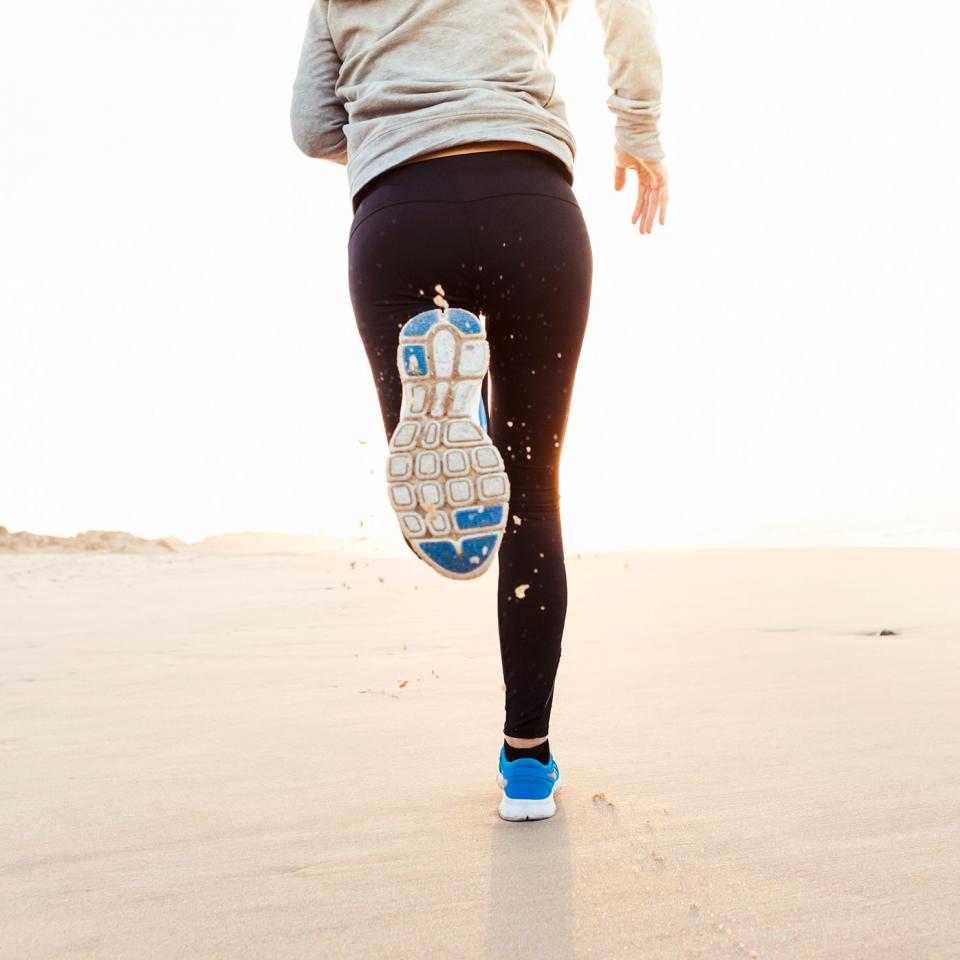Health
How to start running
by Hannah Ebelthite
It’s currently the most popular sporting activity in England with 64% more people pulling on their running shoes than in 2005. Here, Hannah Ebelthite explains what starting to run meant to her and, more importantly, what it can do for you.

I’ve always extolled the benefits of running to anyone who’ll listen. I began with a 5km walk-run plan back when I was 28 (I’m now 41) in an effort to get healthier and stop smoking. It worked – as your lung capacity improves you’re far less inclined to hinder it with cigarettes and, once I’d ditched them, my fitness soared. Not only that, I lost weight, my shape changed, my digestion and sleep improved. Going from a non-runner to someone who could comfortably jog for 30 minutes gave me a much-needed confidence boost.
Since then I’ve become an active member of a running club, got some coaching qualifications, and taken part in countless races, including six marathons. And I’m far from alone in my appreciation of this simple sport. England Athletics figures show 7.1 million people went for a run at least twice a month over the past year. Over 385,000 people entered the ballot for 17,500 coveted places in the 2018 Virgin Money London Marathon.
Why do I love it so? Perhaps it’s the connection with nature, seeing the seasons change and clocking up the miles on a frosty Sunday morning while most people are still in bed. Then there’s the head space. Whenever I’ve had periods of not running, due to injury or illness, anxiety has started to creep in and I’ve realised the role running plays in maintaining my mental health. I love the sense of community and support I get from other runners. I enjoy the goal of training, the sense of anticipation and adrenalin when taking part in a race, and the feeling of pride on completing it. Oh, and the licence to eat carbs is a bonus.
Over the years, I’ve been inspired by so many runners. And it’s not the elite athletes or sub-three marathoners (people who can run the 26.2 miles in less than three hours) who have impressed me most. It’s the school- mum friend who ‘hated’ exercise, but got sponsored to run a Race For Life 5K (race forlife.cancerresearchuk.org), then kept it up. Or my 50-something friend who gets better with age and now sports a GB Masters vest. It’s the friend crippled with depression who dragged himself out to run and discovered that restorative combination of nature and exercise. And the runner who kept up her weekly Parkrun fixtures despite a gruelling chemotherapy regime – and all the fellow runners who walked with her in support.
‘Most people start running to lose weight and shape up, which works. It can burn about 300 calories in 30 minutes,’ says GP and runner Dr Juliet McGrattan, author of Sorted: The Active Woman’s Guide To Health (Bloomsbury Sport, £16.99). ‘It improves cardiovascular fitness, helps to lower your resting heart rate and risk of heart attack, and can boost your metabolism. And, because it a weight-bearing exercise, running increases bone density, reducing the risk of osteoporosis.’
And the ‘runner’s high’ is no myth – running makes you feel happier, thanks to the feel-good, stress-relieving endorphins it releases. ‘In my experience, patients with mild to moderate depression who regularly exercise – and specifically run – can do as well as those prescribed anti-depressants and talking therapies,’ says Dr McGrattan. Best of all, running is cheap and you can do it anywhere, at any time, indoors or outdoors, whatever the weather.
Seven tips for beginners
1. Walk first
'I recommend everyone start with a walk-run approach, even if you’re fit for other activities, like cycling, swimming or the gym,’ says run coach Karen Weir (runwithkaren.com). There are lots of ‘couch to 5K’ walk-run programmes available online and in books or as podcasts. They’ll progress you safely over a period of weeks until you can run for around 30 minutes or 5km, without stopping. Try the NHS Couch to 5k plan at nhs.uk/livewell/c25k.
2. Make it a habit
‘If you want to keep on track, aim to run three times a week,’ says Weir. ‘Decide when suits you best – maybe it’s after you drop the kids at school, or once you’re home from work. Then mark those sessions in your diary and ring-fence them as your time.’ Log your training by writing down where and when you ran, how far, for how long, and how you felt before, during and after.
3. Get the right kit
Running shoes offer cushioning and support while allowing extra space for your forefoot. And while you could spend up to £150, it’s easy to find a decent pair for a third of that price. Head to a specialised running shop where trained staff will match a pair to your gait, running needs and budget. Invest in a good sports bra; even the most flat-chested runner needs a bra designed for high-impact support. Apart from that, run in whatever clothing feels comfortable.
4. Stay safe
‘Take common-sense precautions like running with others, wearing reflective clothing, carrying a phone and choosing well-populated places,’ Weir advises. ‘Mix up your routes – avoid always running in the same place at the same time – and run facing oncoming traffic.’ (To find or map routes, try runtogether.co.uk/routes or walkjogrun.net/ running-routes/GB). Always carry ID (with emergency contact details) in the form of a wristband or trainer tag – visit alertid.co.uk.
5. Join a community
A recent England Athletics survey found those who run alone are 25% less likely to make running a habit than those who join a group. Another survey found that 89% of runners had increased happiness as a direct result of running with others and making new friends.
Parkrun is a good start. Every Saturday at 9am (9:30am in Scotland) people meet in hundreds of local parks across the UK to run (or volunteer at) a measured, timed 5K course. It’s not a race, but your time is logged so you can strive to beat it. Register at parkrun.org.uk.
Parkrun is also a good place to find out about local running clubs – have a look at what club T-shirts people are wearing and have a chat to them. ‘Don’t feel intimidated or feel clubs are just for “serious” runners,’ says running coach Tom Craggs (runningwithus.com). ‘The vast majority welcome all levels.’
Contact your local club via clubfinder.englandathletics.org, or check out Run Together, the new initiative from England Athletics that aims to bring new runners of all levels together and create regular running habits. It’s free to register; some but not all groups may make a small charge per session.
6. Listen to your body
Most injuries are caused by overtraining – so don’t run every day, increase speed and mileage gradually, warm up and cool down with light jogging before and after every run, and don’t forget to stretch. The NHS C25K channel includes a stretching guide: nhs.uk.
7. Stay motivated
Keep setting new goals. ‘They don’t always have to be to get faster,’ says Craggs. You might want to target a new distance or a new terrain. To run in another city or country. To fundraise. ‘Part of the popularity of races is they give runners a goal to aim for and a way of progressing – not to mention recognition of their achievement in the form of a T-shirt or medal,’ he says.
Don't miss:
Lisa Harris ran the London marathon - read her story












